Stair paneling ideas – 10 ways to dress up stair walls in style
Be inspired by stair paneling ideas to create depth or bring in color, and which fulfil a practical purpose, too


Stair paneling ideas can maximize the style of this area of a home. Paneling is often considered a traditional feature, but it might equally have modern style, or a cottage look, and can therefore be used in many different types of houses.
And while it is aesthetically pleasing, stair paneling is also one of the hallway ideas that’s supremely practical. It can protect walls from bumps and scuffs making it a finish to consider for busy family homes. With the right paint finish, it can simply be wiped clean of any marks, too.
Here, we’ve collected inspirational stair paneling ideas along with expert advice from interior designers to inspire designs for the entrance to your home.
Stair paneling ideas
If you're looking for staircase ideas that bring character and architecture to a hallway, wall paneling is a great place to start. Consider stair paneling ideas that employ it on the stair wall to full height or to dado level, or feature it on the lower part of the staircase. Be inspired, too, by finishes in clean light hues, moody darks, and natural wood tones.
1. Use stair paneling to add texture
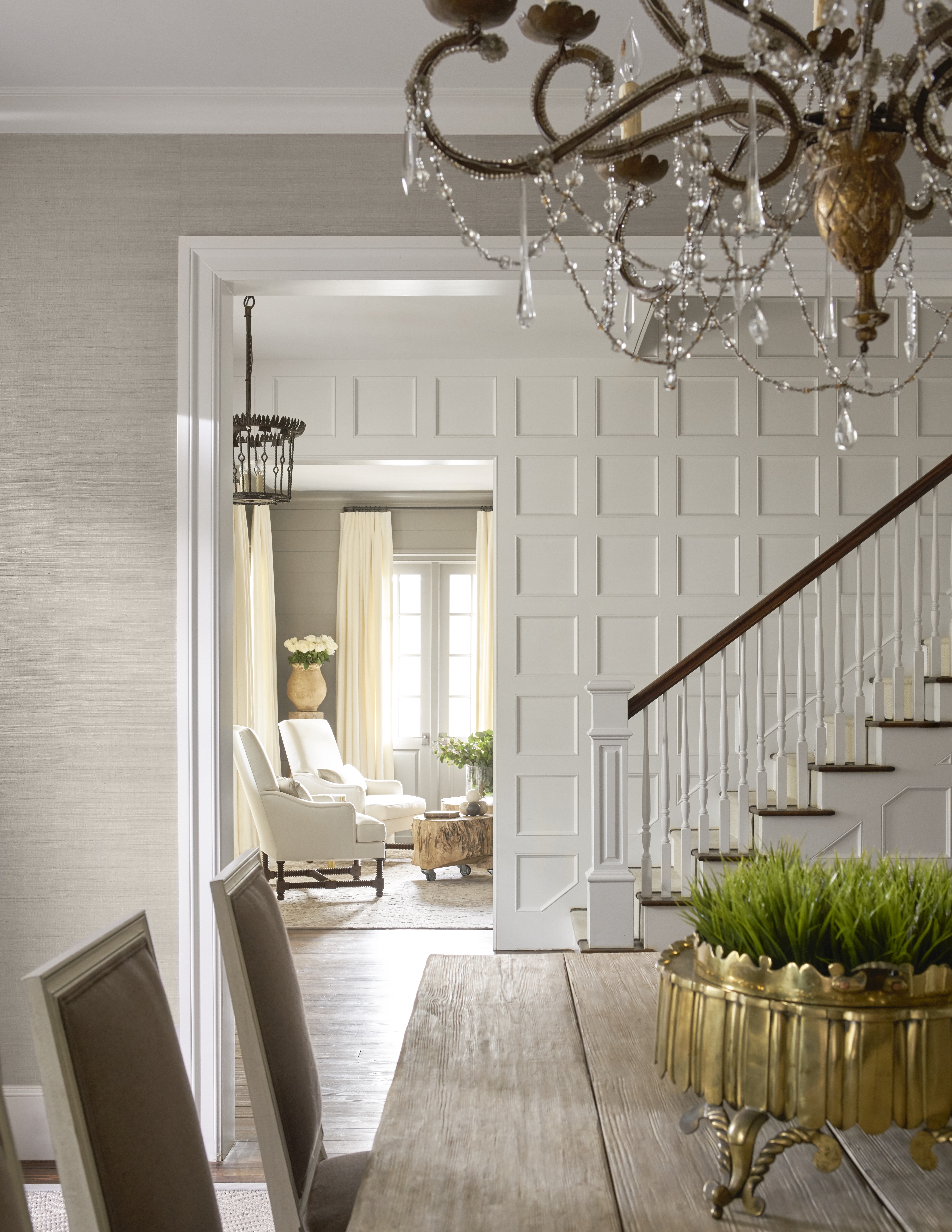
You might opt for stair paneling ideas rather than wallpaper to bring texture to a wall.
‘Paneling adds depth to this entryway, and dresses up the space,’ says Julie Dodson of Dodson Interiors. ‘On stairs, paneling is nice because it’s wipeable and easy to clean.
‘This particular home was gutted and restored, and we wanted to create some depth and texture on the wall. You can do this with wallpaper, but that wasn’t the homeowners’ style. They are a little more traditional-meets-transitional, so we chose a more modern paneling with even squares.’
Design expertise in your inbox – from inspiring decorating ideas and beautiful celebrity homes to practical gardening advice and shopping round-ups.
2. Match paneling to the staircase
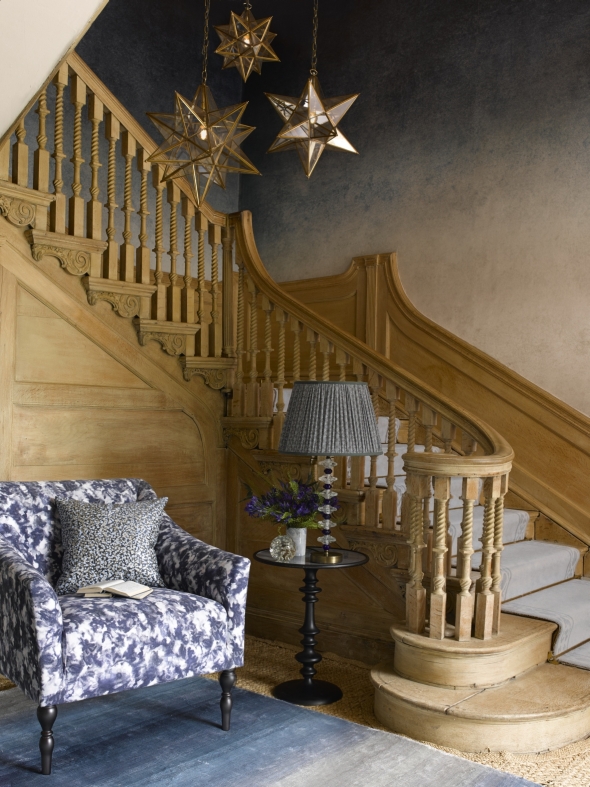
Where a staircase has a wood rather than painted finish, consider matching paneling to the steps, spindles, newel post and staircase railings to bring warm organic tones to the hallway.
In this home, the paneling makes a further connection to the staircase design, echoing the sweeping lines and ornate detail of its components. The effect is one of grandeur, and perfect for a traditional home.
3. Take a lead from the flooring

Consider picking up a color from a patterned floor tile for stair paneling. ‘This hallway was quite a large space with a balance of contemporary and traditional features,’ explains Cherie Lee of Cherie Lee Interiors. ‘The floor was a traditional Victorian tile and there was a super large Crittall screen in the hallway. The use of paneling helped balance the contemporary screen.
‘We took the color palette from the tiles and used it on the staircase, banisters, walls and the paneling. It created a cohesive scheme and made everything feel calm and classic whilst combining more contemporary elements.’
The paint color of the panelling here is Farrow & Ball’s Manor House Gray, and it's even echoed in the staircase runner idea.
4. Make a cozy nook
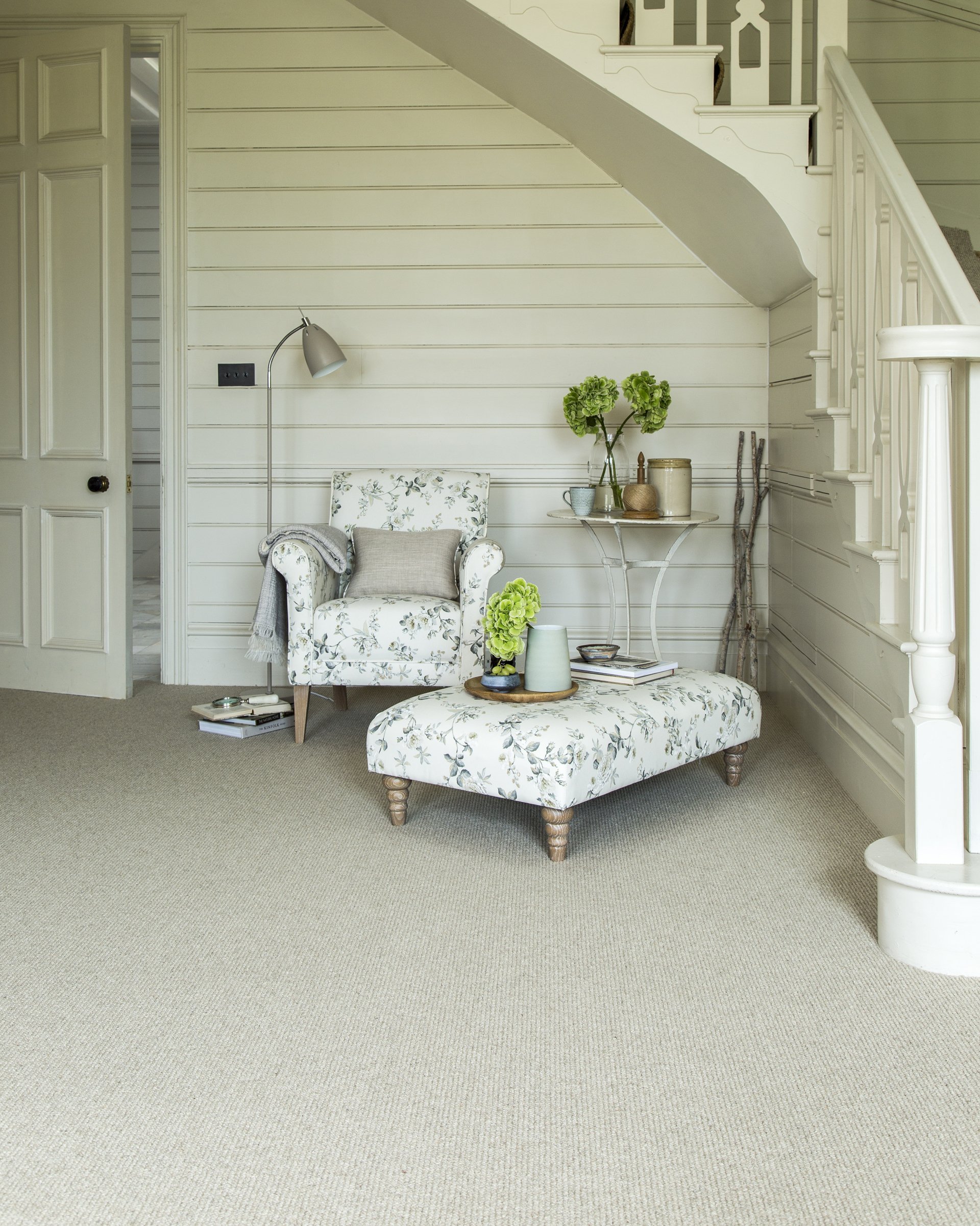
Whether you're looking for landing ideas or to add character to a hallway, paneling on the lower part of an L-shaped staircase makes an inviting nook for an armchair and footstool in this hallway. The horizontal boards create a farmhouse feel that’s welcoming and elegant without being over formal, and the paneling is repeated on the stair wall to complete the look.
Painted in a soft, off-white finish the effect is one of spaciousness and light that’s continued by the finish of the staircase itself.
5. Combine traditional and modern
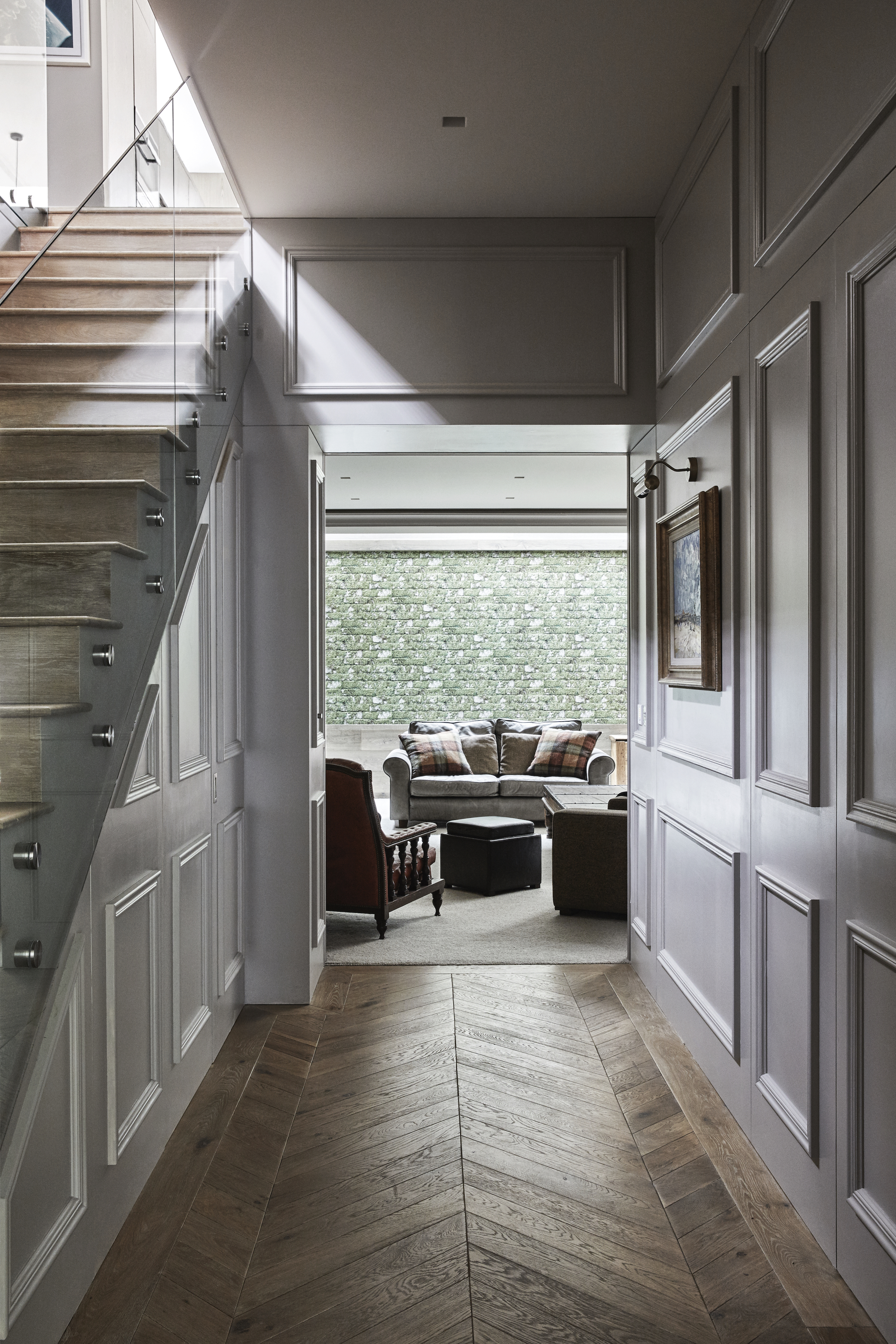
Stair paneling ideas that are traditional either because they are original features of an older home or have authentic period style can be successfully teamed with more contemporary choices.
In this hallway, the lower part of the staircase has elegant paneling that’s repeated on the other side of the hallway but a contemporary glass baluster. The barely there baluster with its clean lines lets the attractive and more detailed paneling take center stage. And it has the advantage of allowing a clear view to it as well.
6. Create a color surprise
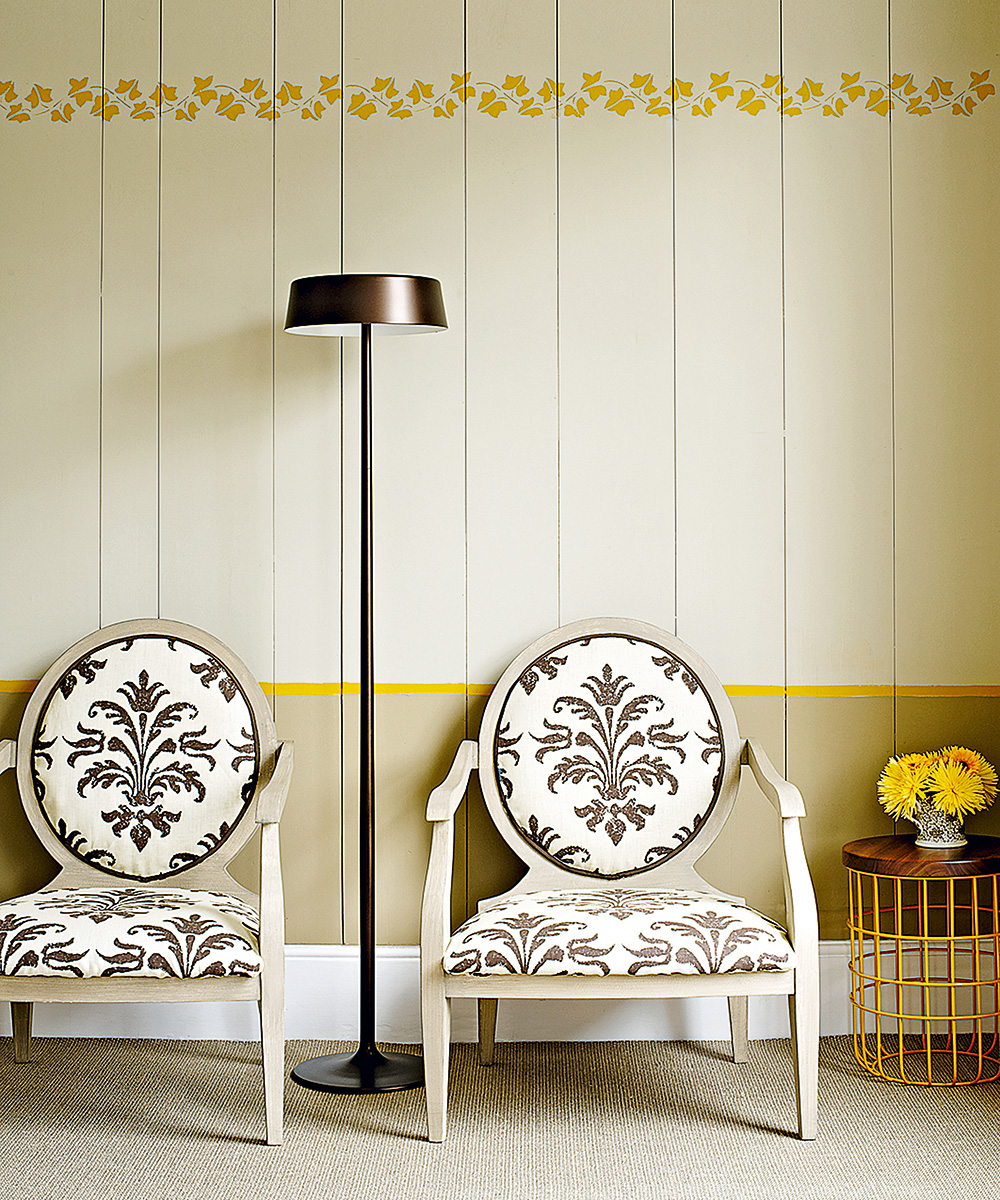
Make paneling a highlight by using staircase paint ideas in an unexpected shade using contemporary paint effects. In this home, a pistachio green pops against the quieter hues of the neutral carpet and the painted armchairs.
And because the paneling extends all the way up the wall, the color also draws the eye up the stairs and beyond for an inviting impression.
7. Swap to wallpaper panels

While stair paneling ideas generally mean using wood, panels made with wallpaper can be an arresting and sophisticated staircase wall idea.
‘Staircases, much like hallways, are often the first space you or your guests will encounter upon entering your home,’ says Philippe Desart, managing director, Arte. ‘Often an afterthought when it comes to design, these spaces need to be highly functional as well as create a welcoming atmosphere that sets the tone for your interior.
‘Choose bold, graphic prints and evocative designs to bring this area to life and don’t be afraid to experiment with textures. This is an area you pass through rather than dwell, so here you can afford to be bold with the scale, color or texture of your wallcoverings.
‘Bolder prints and patterns installed in panels are a great alternative to hanging artwork on the walls, adding visual interest and a striking design feature without compromising on what is often a small, narrow space.’
Shown here is the Flamencos Andinos design, which has a natural woven jute texture.
8. Complement a cottage
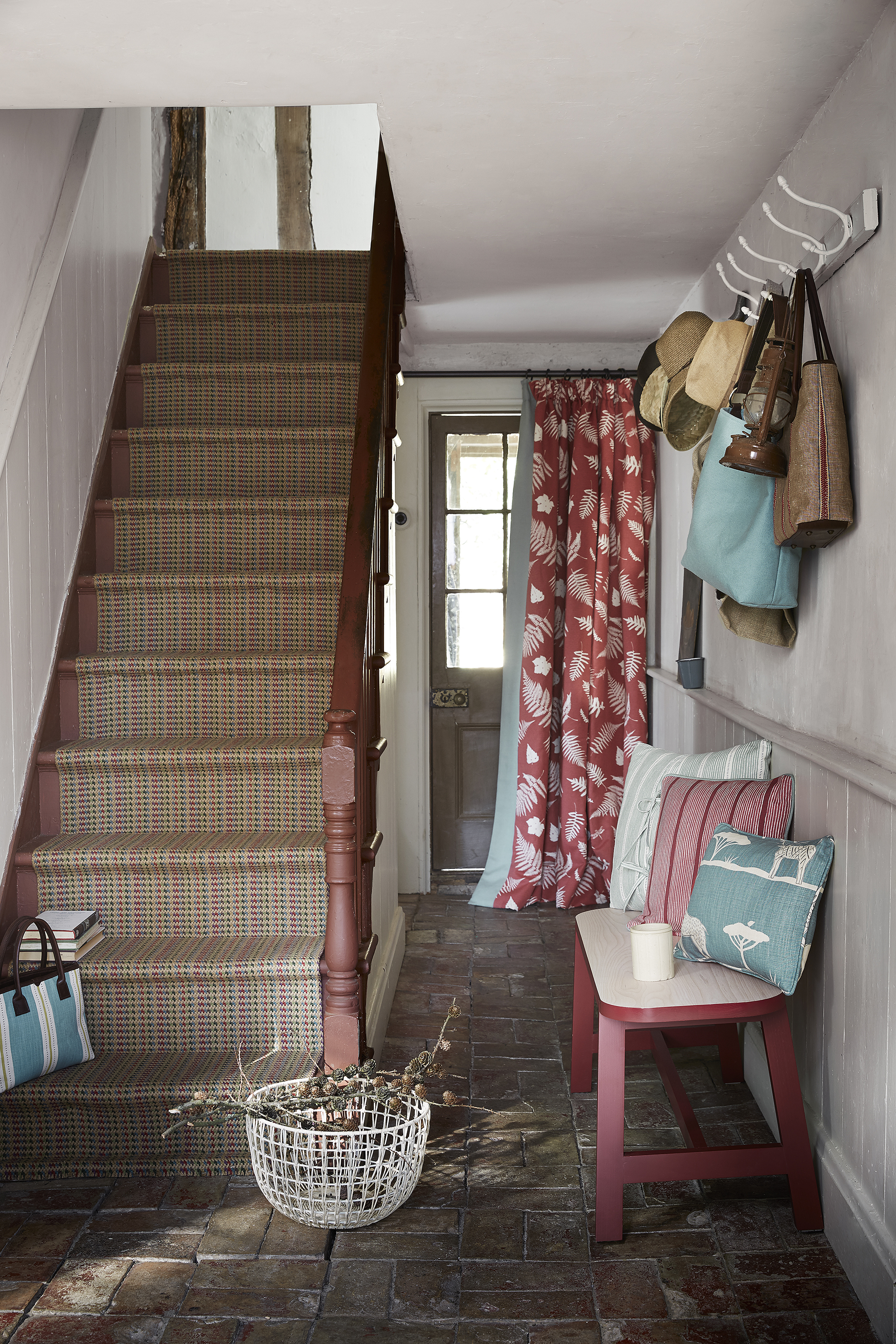
Tongue and groove is a distinct contender cottage staircase ideas. Add it alongside the staircase to dado height for a fuss-free look that suits rustic interiors to a T; here it’s used in the hallway, too.
Paneling’s ability to protect walls can be valuable on narrow flights of stairs and corridor-style entryways where knocks are more likely to occur.
The paneling is finished in a soft neutral in this home, allowing the colorful patterned fabrics plus the painted wood of the staircase and bench to come to the fore.
9. Expand the space with a light shade for paneling

Weigh up the merits of choosing a paint finish for paneling that will give the illusion of extra space.
‘If your stairs and floor are light in color, you may wish to choose stronger shades for the paneling to provide a contrast,’ says Ruth Mottershead, creative director, Little Greene. ‘However, if you have darker flooring and stairs, choosing lighter tones such as Wood Ash (seen here) will work better to brighten up your hallway and staircase, giving the illusion of space in an area which can often be quite narrow.
‘Consider adding design details by painting your woodwork or dado rails in a different tone,’ she suggests.
10. Work with dark paneling shades
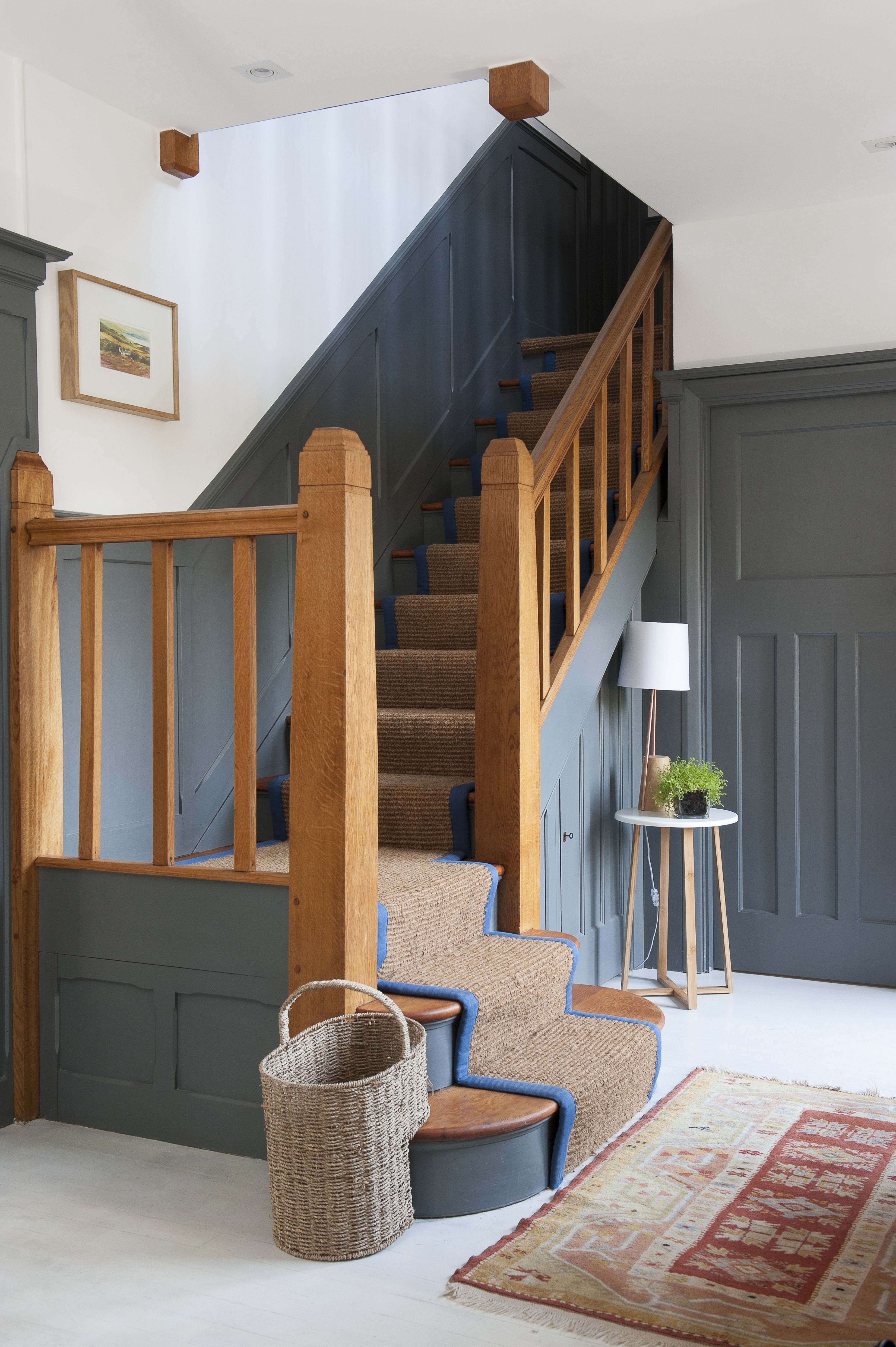
And here is an example of the power of painting stair paneling in a statement dark shade.
In a large hallway with excellent natural light even full-height paneling can be given a moody finish, while for smaller spaces, a reflective white wall above dado height will keep the space bright with the darker shade used on paneling below dado.
This rich gray introduces a modern twist to an older home and is repeated on staircase risers for a cohesive design.
What are the different types of paneling?
There are many different types of paneling that can be chosen for staircase walls, and each creates its own effect. More informal designs include both shiplap and tongue and groove. The former consists of individual boards most often used horizontally. The overlapping panels fit together via joints called rabbets which create a tight seal.
Tongue and groove has a similar appearance but a different joint between boards – from which it gets its name. Beadboard also has a tongue-and-groove joint, but has a milled bead on the tongue side and a chamfered edge on the groove side.
Board and batten paneling consists of a series of flat boards with battens laid on top at the joints. It has a look that’s chic without being overly traditional.
Paneling can also feature flat or raised panels along with vertical and horizontal rails, and can be original in an older home, or a new version with authentic detail, or a contemporary take, which may often be less intricate. Generally, it has a grander look that choices such as shiplap, and tongue and groove and beadboard.
Is paneling a good idea?
Paneling can be a great idea for different areas of a home, including for the stairs as well as the hallway. Paneling can add interest to a wall, so consider it as an alternative to wallpaper to introduce texture and pattern.
For a busy family home, paneling can be a sound choice because it protects walls from bumps, and it can be given a wipe-clean paint finish so any marks can easily be removed. Paneling can also hide any slight unevenness in a wall finish, which is another advantage of using it.
Paneling is also a versatile choice; it can be a fabulous original feature of a Victorian or other historic home, but the right design can suit modern or transitional spaces.

Sarah is a freelance journalist and editor. Previously executive editor of Ideal Home, she’s specialized in interiors, property and gardens for over 20 years, and covers interior design, house design, gardens, and cleaning and organizing a home for Homes & Gardens. She’s written for websites, including Houzz, Channel 4’s flagship website, 4Homes, and Future’s T3; national newspapers, including The Guardian; and magazines including Future’s Country Homes & Interiors, Homebuilding & Renovating, Period Living, and Style at Home, as well as House Beautiful, Good Homes, Grand Designs, Homes & Antiques, LandLove and The English Home among others. It’s no big surprise that she likes to put what she writes about into practice, and is a serial house renovator.